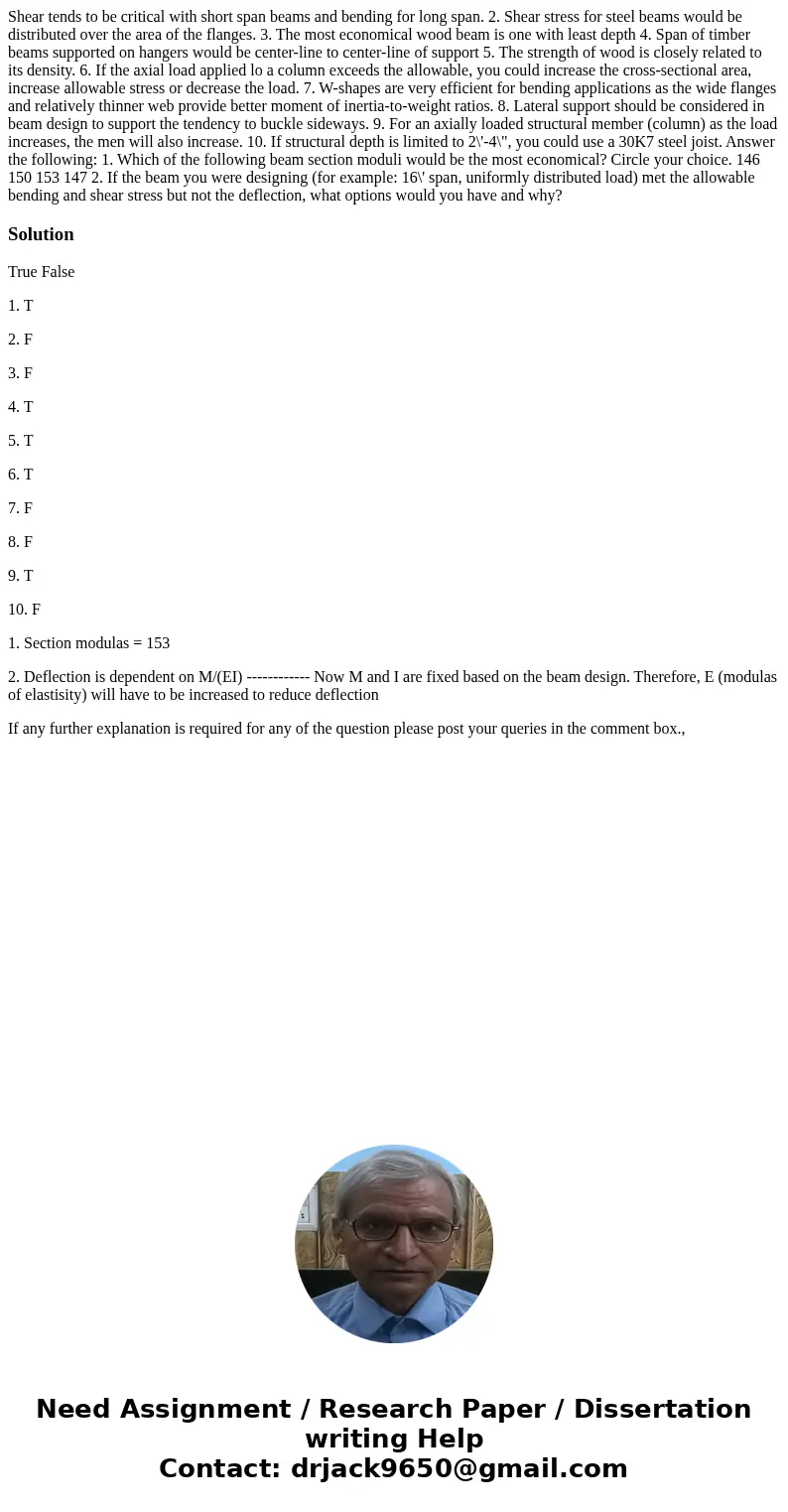Shear tends to be critical with short span beams and bending
Shear tends to be critical with short span beams and bending for long span. 2. Shear stress for steel beams would be distributed over the area of the flanges. 3. The most economical wood beam is one with least depth 4. Span of timber beams supported on hangers would be center-line to center-line of support 5. The strength of wood is closely related to its density. 6. If the axial load applied lo a column exceeds the allowable, you could increase the cross-sectional area, increase allowable stress or decrease the load. 7. W-shapes are very efficient for bending applications as the wide flanges and relatively thinner web provide better moment of inertia-to-weight ratios. 8. Lateral support should be considered in beam design to support the tendency to buckle sideways. 9. For an axially loaded structural member (column) as the load increases, the men will also increase. 10. If structural depth is limited to 2\'-4\", you could use a 30K7 steel joist. Answer the following: 1. Which of the following beam section moduli would be the most economical? Circle your choice. 146 150 153 147 2. If the beam you were designing (for example: 16\' span, uniformly distributed load) met the allowable bending and shear stress but not the deflection, what options would you have and why?
Solution
True False
1. T
2. F
3. F
4. T
5. T
6. T
7. F
8. F
9. T
10. F
1. Section modulas = 153
2. Deflection is dependent on M/(EI) ------------ Now M and I are fixed based on the beam design. Therefore, E (modulas of elastisity) will have to be increased to reduce deflection
If any further explanation is required for any of the question please post your queries in the comment box.,

 Homework Sourse
Homework Sourse